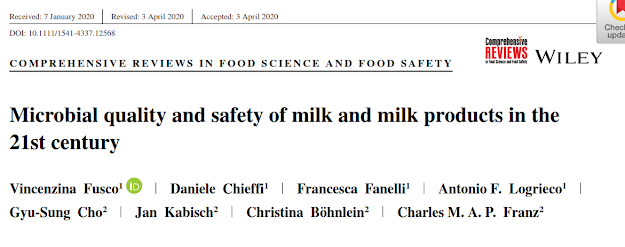(Research Journal) Microbial Quality and Safety of Milk and Milk Products in The 21st Century
Abstract
Milk and milk products have been utilized by humans for many thousands of years. With the advent of metagenomic studies, our knowledge on the microbiota of milk and milk products, especially as effected by environment, production, and storage parameters, has increased. Milk quality depends on chemical parameters (fat and protein content and absence of inhibitory substances), as well as microbial and somatic cells counts, and affects the price of milk. The effects of hygiene and effective cooling on the spoilage microbiota have shown that proteolytic and lipolytic bacteria such as Pseudomonas or Acinobacter spp. Predominate the spoilage bacterial populations. These bacteria can produce heat-stable proteases and lipases, which remain active after pasteurization and thus can spoil the milk during prolonged storage. Additionally, milk become contaminated after pasteurization and therefore there is still a high demand on developing better cleaning and sanitation regimes and equipment, as well as test systems to (quantitavely) detect relevant pathogenic or spoilage microorganisms. Raw milk and raw milk cheese consumption is also increasing worldwide with the growing demand of minimally processed, sustainable, healthy, and local foods. In this context, emerging and re-emerging pathogens once again represent a major food safety challenge. As a result of global warning, it is conceivable that not only microbiological risks but also chemical risks relating to presence of mycotoxins or plant toxins in milk will increase. Herein, we provide an overview of the major microbial hazards occuring in the 21st century.
KEYWORDS
milk, spoilage, microbiota, safety, pathogens
see on pdf :
DOI: 10.1111/1541-4337.12568

0 Response to "(Research Journal) Microbial Quality and Safety of Milk and Milk Products in The 21st Century "
Post a Comment